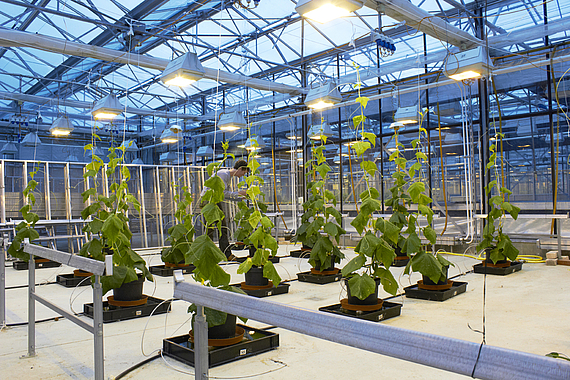
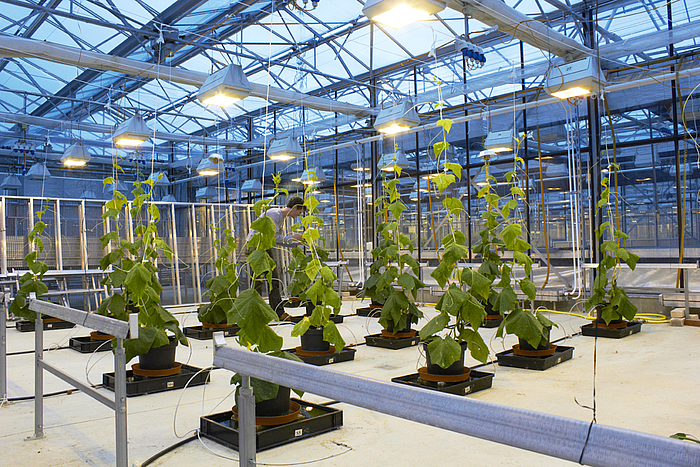
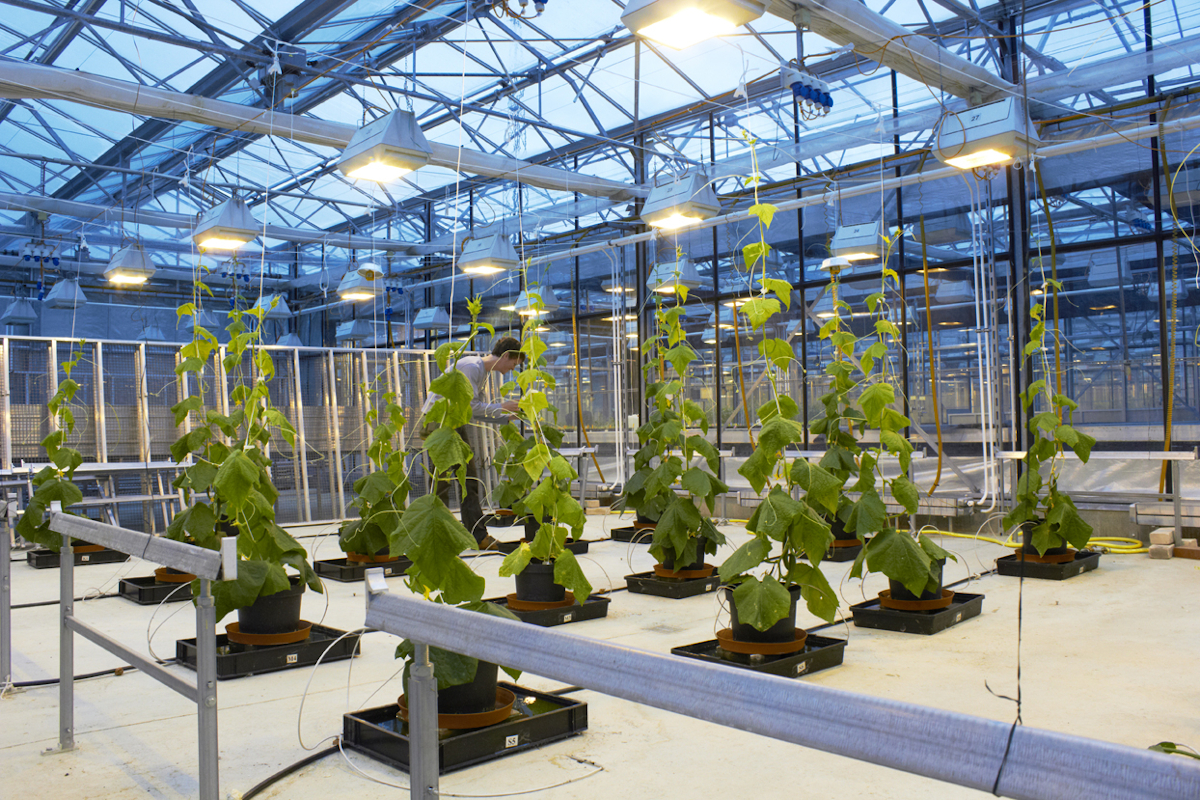
The main research areas of phytomedicine are currently covered by two working groups (Prof. E. Maiss, Plant Virology, PD Dr. R. Meyhöfer, Entomology). Entomology focuses on the biology and ecology of pests and beneficial insects in outdoor and greenhouse horticultural crops. Orientation in time and space as well as inter- and intraspecific interactions between different host organisms are investigated in order to develop specific applications for biological and integrated plant protection.
In plant virology, the focus lies on the description and characterization of new viruses from different organisms such as plants or plant associated fungi. Viruses are detected, isolated and sequenced using various diagnostic methods. These information serve as the basis for further experiments, which should help us to a better understanding of the biology of the pathogens, their transmission pathways leading finally to the development of control measures.
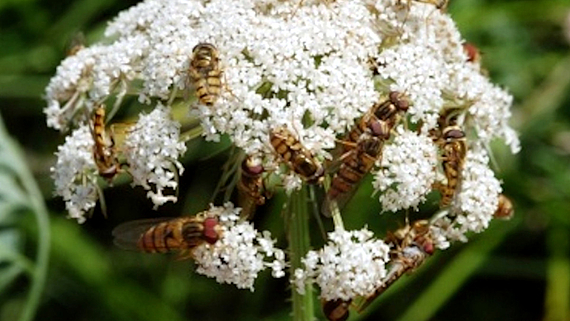
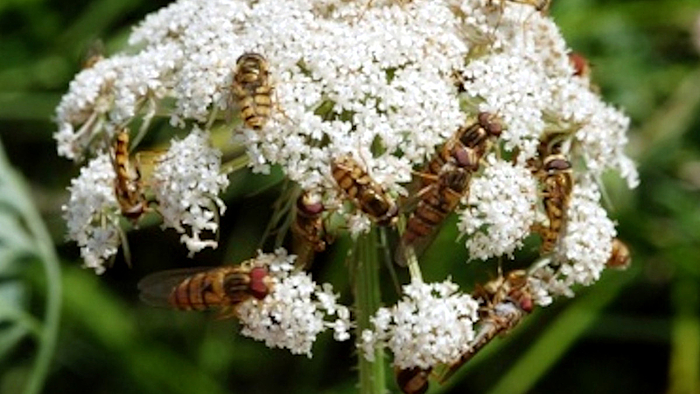
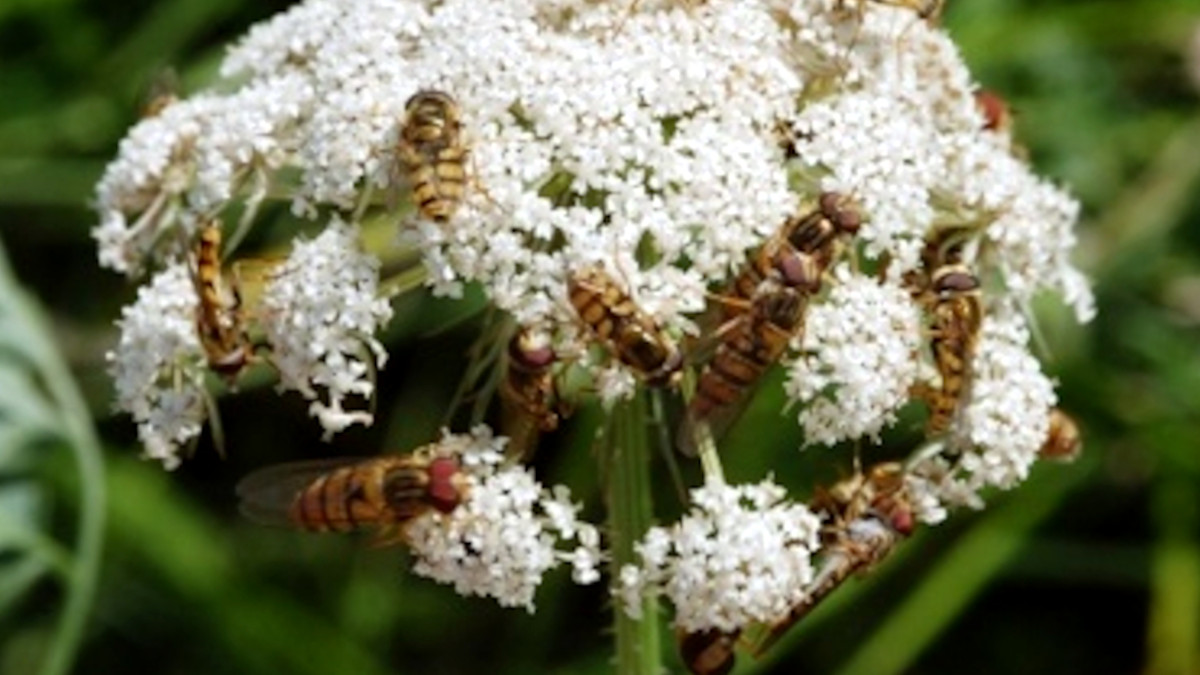
Behavioural ecology
Insects use different sensory impressions to orient themselves towards the host plant or its prey or host organisms. The orientation process can be divided into different phases: (1) host identification, (2) host recognition and (3) host acceptance. While olfactory and visual signals play an important role in host identification, mechanical and gustatory signals play an increasingly important role in host recognition and acceptance. The meaning of the sensory impressions changes with the orientation process and is decisive for the complex behavioural responses of insects. In the Applied Entomology group, the research focus in current projects is on the visual orientation of pests and beneficial insects and the influence of olfactory signals. In particular, new illumination methods based on narrow-band LEDs are used to characterize visual preferences. Various devices, such as video surveillance, olfactometer, Electrical Penetration Graph (EPG), wind tunnel, tracking (Ethovision®) or direct observation (Observer®) are used for the analysis of the behavioral reactions in Biotest. A better understanding of the behavioural basics opens up numerous possibilities to develop innovative strategies for biological plant protection.
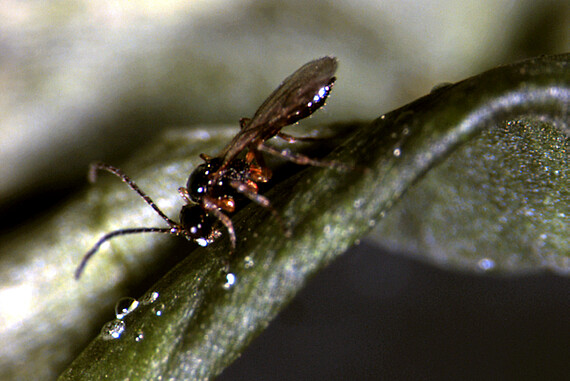
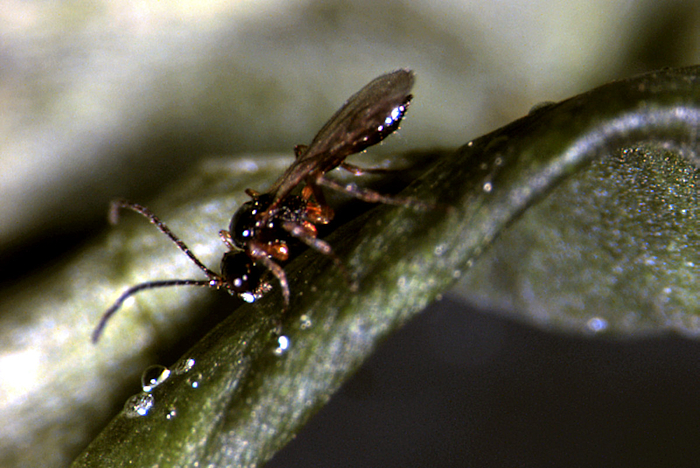
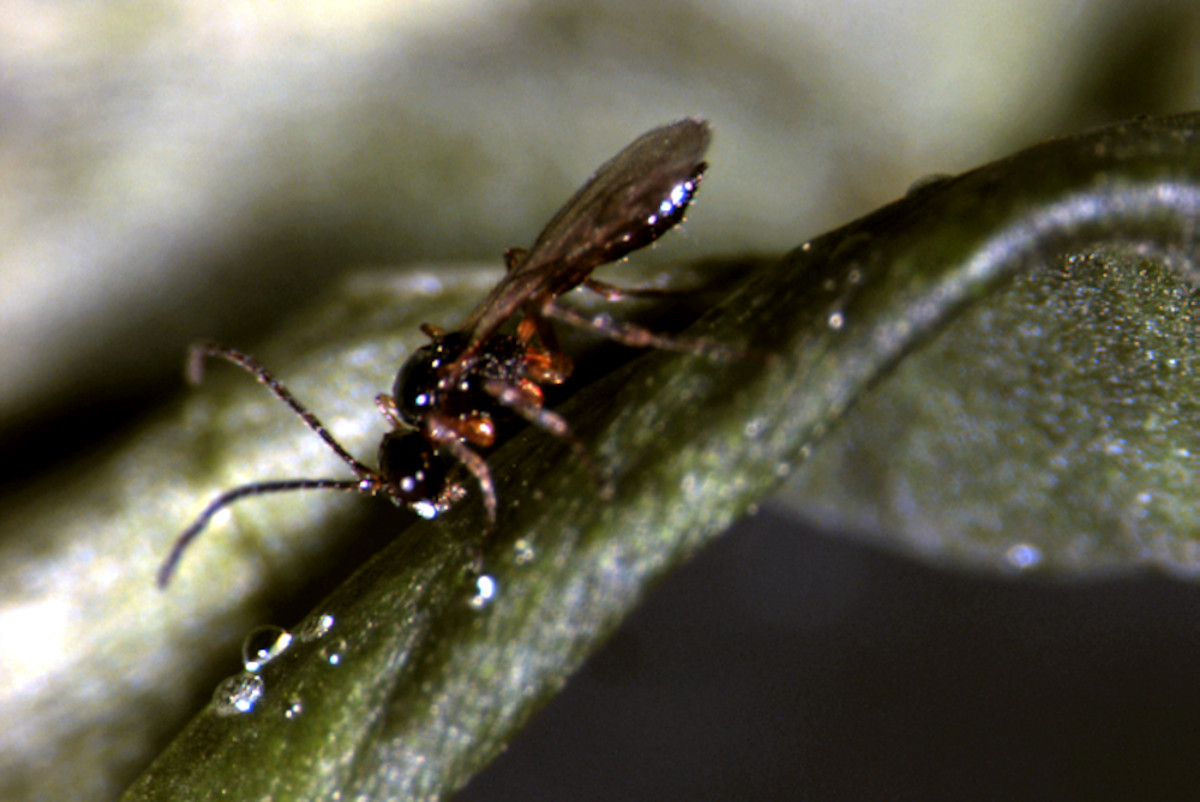
Biological plant protection
Prevention, forecasting and intervention are central elements in both biological and integrated crop protection in the development of sustainable control strategies. For direct control, the user can draw on a wide range of natural counterparts (predators, parasitoids, entomopathogenic fungi) or bio-pesticides in many areas. In contrast, there is a high need for research into the targeted prognosis of pests or beneficial organisms and the development of preventive measures. The entomology applied in the working group deals with these current questions on horticultural crops both in the field and in the greenhouse. In addition to the automated monitoring of pests and beneficial insects using innovative monitoring methods, the local importance of source habitats for predicting the pest and beneficial insect potential is also included. Host plant resistance is playing an increasingly important role in prevention and is being investigated in various model crops. However, targeted measures to promote functional biodiversity in the immediate vicinity of the crop, i.e. tailor-made flower strips to promote beneficial animal activity or innovative mulching methods to promote soil organisms, are also included. With the help of automated intelligent decision support systems, the diversity of information is processed in a user-friendly way. The investigation methods used are based on classical ecological field methods, but also on innovative methods ranging from video surveillance to modelling and molecular biology.
Molecular Plant Virology
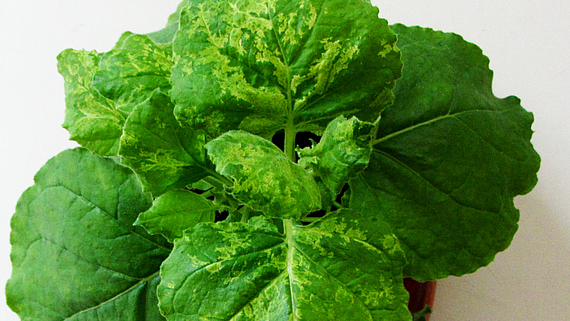
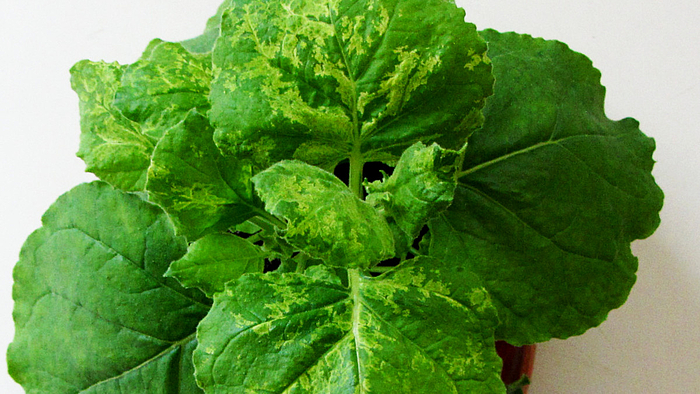
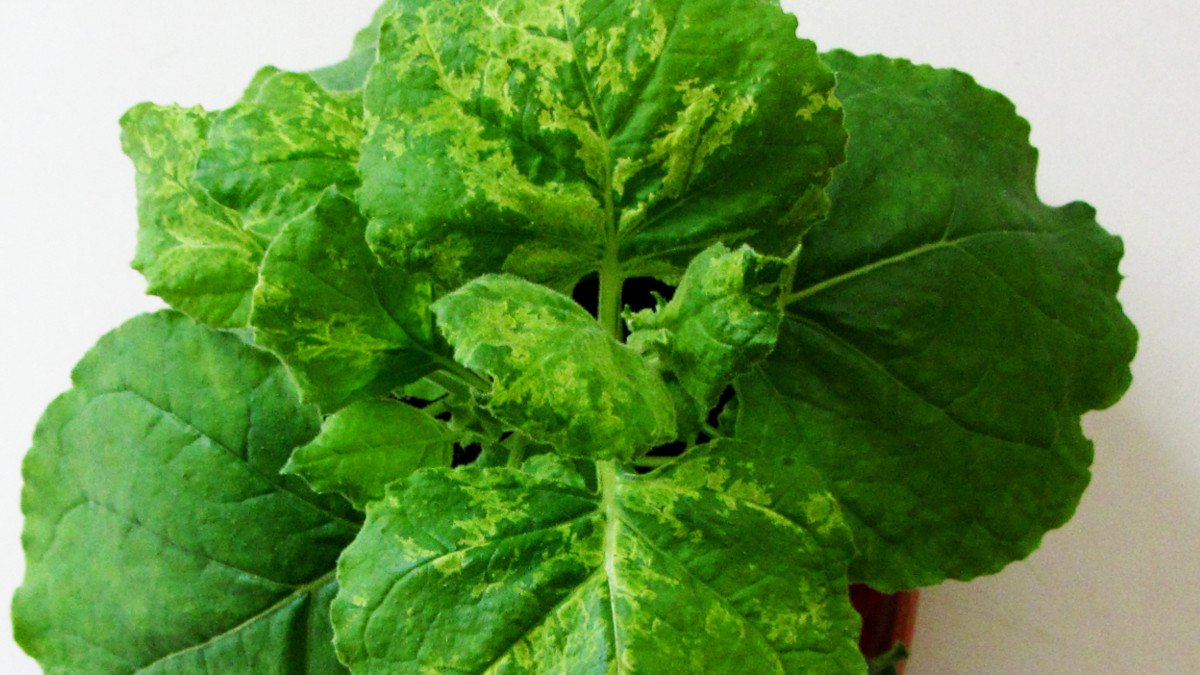
"The role of the infinitely small in nature is infinitely great" (Louis Pasteur)
Viruses are among the submicroscopic pathogens that surround us everywhere. An example of this is our food, such as vegetables or fruits. Plant viruses can occur latent (i.e. without symptoms) on the one hand, and cause massive damage to cultivated plants due to the severity of their symptoms on the other hand, leading to the total loss of yields. For this reason, we at the Plant Virology Working Group are studying the host plant spectra and symptom developments of viral pathogens in various plant species. To date, about 1000 viruses have been described on plants, which exhibit a wide variety of particle and genome structures. An important part of our work is the diagnosis of new viruses (e.g. by RT-PCR and/or ELISA), the determination of their complete sequences and their taxonomic classification. Each new species or isolate can provide information on the biological functions of the genes by differences in the genome sequence to other individuals. This is because the strategies for replication and thus expression of the required genes are diverse and therefore of particular interest for research. In order to investigate gene and protein functions, we construct infectious full-length clones of viruses, for example. With the help of these clones, specific modifications can be made to the viral genome sequence, such as the targeted mutation of potentially functional motifs or fusion with genes for reporter proteins, in order to observe the localisation of the viruses within the plant cell.


